Nuclear art
This picture of the Cruas Nuclear Power Station in France is very evocative. While pure white fumes go up in to the atmosphere, art and nuclear energy happen to combine wonderfully. In Hipcescu, this is something we have always known.
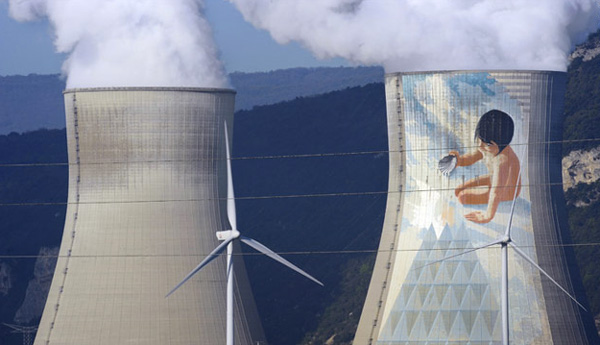
This picture of the Cruas Nuclear Power Station in France is very evocative. While pure white fumes go up in to the atmosphere, art and nuclear energy happen to combine wonderfully. In Hipcescu, this is something we have always known.

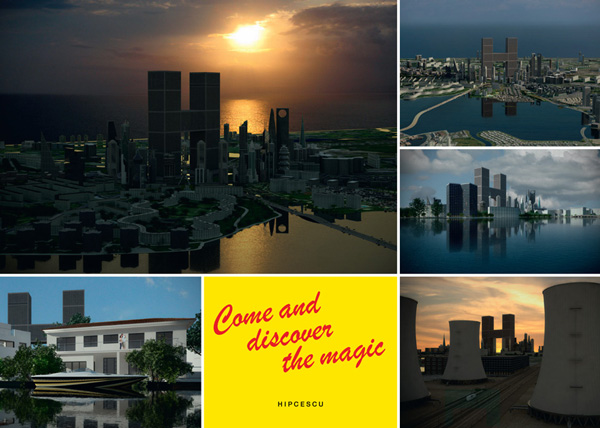
On the sunny shores of the Caspian, only a four hour flight away from Western Europe, the City of a Thousand Suns awaits you. Hipcescu, a thriving 21st century metropolis, home to the world’s highest building, the iconic Hipcescu Tower (850 m). Visible from every angle of the city, it is a monumental tribute to our Secretary General, V. Hipcescu. And while a highly efficient state-security apparatus ensures your safety at all times, you will thoroughly enjoy our eco-friendly beaches, exciting nightlife, tax-free shopping, reliable nuclear energy sources and excellent real estate investment opportunities. Hipcescu. Come and discover the magic.
The brilliant idea to construct a building in the shape of an H is the irrefutable intellectual property of V. Hipcescu. But because he is a man of transcendent altruism and generosity, he will not sue the Lisbon based architecture firm Gonçalo Byrne Arquitectos for plagiarism.
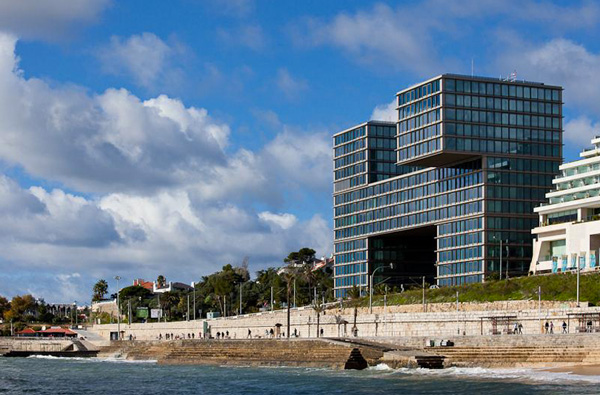 Images courtesy of gonçalo byrne arquitectos / © joao morgado.
Images courtesy of gonçalo byrne arquitectos / © joao morgado.
Besides the fact that Hipcescu Tower (850m, 200 stories) dwarfs the so-called Estoril Sol Residence (15 stories), the resemblance between the two buildings is striking.
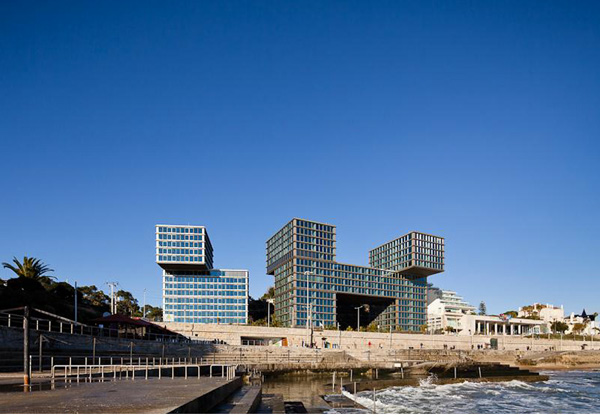
Take a look at more pictures of the Estoril Sol Residence and see for yourself.
This here is the Druzhba Holiday Centre in Yalta, Ukraine. The picture, which I stumbled across in yesterday’s the Guardian, was taken by Frédéric Chaubin.
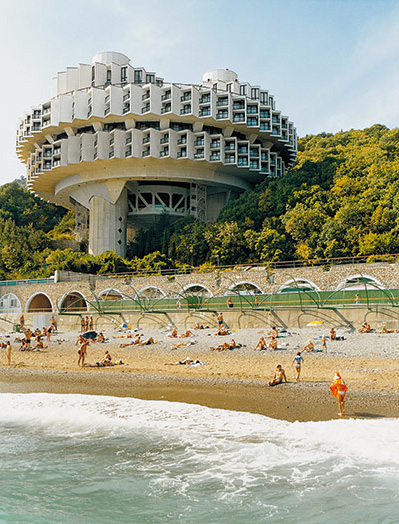
It is one of ninety pictures from his recent book Cosmic Communist Constructions Photographed, that documents weird and wonderful works of architecture across the former Soviet Union. Because I am so delighted by this inspiring publication, I have decided to invite Frédéric Chaubin to document the eigth wonder of the world, Hipcescu Tower. Thank you for your time.
V. Hipcescu. Urbanist. Architect.
Like Leonardo da Vinci, V. Hipcescu embodies the ideal of the homo universalis, excelling in a wide variety of fields – from athletics to engineering, from poetry to music, and from nuclear physics to social sciences, to name but a few. We will, however, designate this space to his role as city-founder.
The completion of Hipcescu in 2010, with the characteristic 850 meter high Hipcescu Tower at its center, attests to V. Hipcescu’s stature as an architect and urban planner. We can clearly discern the influence of Haussmann, the progenitor of the Parisian grands boulevards, that stem from the Place de l’Étoile like beams of light emanating from a star.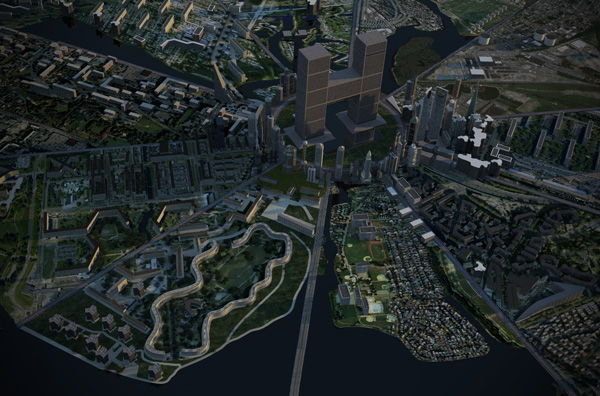
As an architect, V. Hipcescu has been strongly influenced by some of the great visionaries of functional architecture – Le Corbusier, Émile Aillaud, and the lesser known Siegfried Nassuth – as well as by the ideas postulated by the Congrès International d’Architecture Moderne (CIAM).
V. Hipcescu’s magnum opus is, without a doubt, Hipcescu Tower. This majestic 200-story edifice strikes a delicate yet daring balance between functionalism and cosmopolitanism. And while it is undeniably staunch and indomitable, it is also receptive to its environment, interacting with it organically, as if by osmosis.
Hipcescu Tower is the culmination point of V. Hipcescu’s architectural prowess – simultaneously a synthesis and a sublimation of the ideas and theories of his significant predecessors. Through it, we are transported into the stratosphere of Architecture. Hipcescu Tower is a monument to Virility on a scale that is unprecedented and breathtaking.
We are truly grateful for what V. Hipcescu has given us and thank him for so kindly sharing his genius with the world. On these pages, you can enjoy a selection of the most beautiful panoramas of the City of a Thousand Suns, Hipcescu. Click here to find out more about V. Hipcescu. Thank you.
This old picture of the Parisian suburb of Sarcelles captured my attention. A pic says more than a thousand words, right?
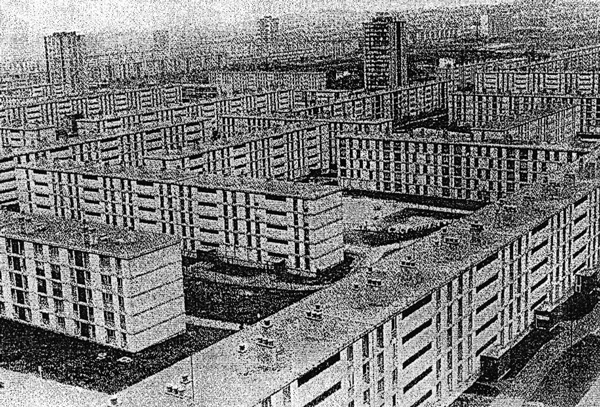
Originally devised as a social housing project, Sarcelles became a symbol of the problems of the grands ensembles, monolithic suburbs for immigrants. In the sixties, the term ‘Les Sarcellites’ emerged, describing the inhabitants of the grands ensembles. Sarcelles is a only a few RER stops away from central Paris. It’s a good place to unwind after a shopping spree on Champs-Élysées. Take line D1 in the direction of Orry-la-Ville-Coye. Because I’m interested in the effects that architecture and social engineering have on music, I’d like to present to you a music video by Playcos, a young rapper from Sarcelles. In ‘Bienvenue dans ma ville, Sarcelles’ from 2007, Playcos welcomes us to his wonderful world.
Needless to say that in the City of a Thousand Suns, Hipcescu, where social harmony and cleanliness prevail, such transgressions would never occur. Thank you.
Game Over (2009) is a music video by Booba, a Moroccan-Senegalese rapper from the Parisian banlieue of Boulogne-Billancourt. I tried to find out who the director of the video is, but to no avail. Despite a slow start, this video is worth the watch. The art direction and photography are excellent. The gloomy atmosphere is incisive. You almost sense the roaches on the wall of the claustrophobic apartment in which part of the video is set. This stuff is really fine-tuned to deliver Booba’s message and music.
BOOBA – GAME OVER from STREETFAB on Vimeo.
I’m fascinated by the banlieues that surround Paris. The often monolithic building blocks, called grands ensembles, were built in the 50s and 60 to accommodate large streams of immigrants from Algeria and other (ex-)colonies. From an urban planning point of view, it was a great solution – if you didn’t think about the consequences ten, twenty years down the line. Unemployment, violence and alienation festered inside the grands ensembles, creating a sort of externalized Bastille – stagnant social pools, just outside the Périférique, Paris’ ring road.
Fortunately, also good things like hip hop have come from those massive concrete zones. The ever-expanding library of French hip hop videos provides a great insight into functional architecture and its consequences.
Please note that videos, such as the one mentioned above, could never spring from the suburbs of the City of a Thousand Suns, Hipcescu, because social harmony and cleanliness would make such transgressions impossible. Thank you.
Le Corbusier is an architect that has inspired me greatly. If I wouldn’t have dedicated Hipcescu Tower to myself, he would have been a likely candidate. Here is one of my favorite quotes from his book Towards a New Architecture (1924).
“We must create a mass-production state of mind:
A state of mind for building mass-production housing.
A state of mind for living in mass-production housing.
A state of mind for conceiving mass-production housing.”
Le Corbusier didn’t just talk the talk, he was ready to walk the walk. And so, in 1925, he presented his Plan Voisin.
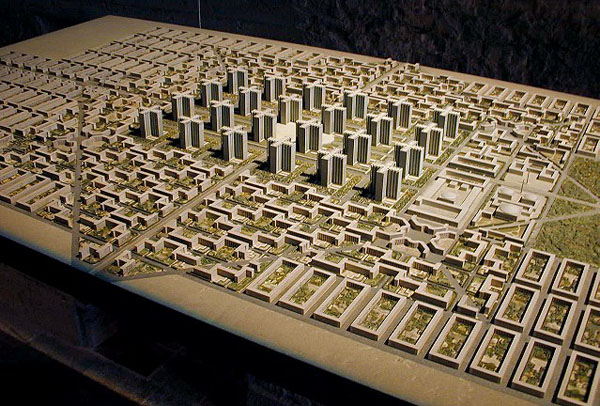
It entailed bulldozing most of central Paris north of the Seine, and replacing it with sixty-story cruciform towers, the shape of which derived from radiator elements. In the end, the plan was never carried out.
“We must find and apply new methods, clear methods allowing us to work out useful plans for the home, lending themselves naturally to standardization, industrialization, Taylorization”, he wrote. “The plan must rule. . . . The street must disappear.” Clearly, this is highly efficient thinking.
In this video, we see the master explaining his Plan Voisin.
At one point in the video, Le Corbusier’s envisioned towers are inserted into contemporary Paris. And then you realize just how beautiful it could have been…
Nursultan A. Nazarbayev is the Supremo of Kazakhstan and an esteemed colleague. He was elected president of the glorious Kazakh nation on 1 December 1991. Under the auspice of this great man, who firmly guides his country towards a brighter future, the capital was transferred from Almaty to Astana in 1997, a city constructed from scratch in the midst of Kazakhstan’s windy steppes. Winter temperatures in Astana can drop to -40 Celsius. No place for pussies and all the more so a cradle of panoramic ideological vistas and Great Deeds. During one of my low-profile visits to Astana I was impressed by the beautiful, modern architecture and the powerful melange of capitalism and state-guided enterprise. Astana is not some pitiful provincial backwater. On the contrary, it is a thriving 21st century Metropolis, where my good friend, the world-renowned architect Sir Norman Foster, has planted a marvel of modern engineering, the epic Khan Shatyr Entertainment Center.
Make no mistake, Astana is a place for happy, hard-working people. This video slideshow, adorned with stunning visual effects and a spirited folkloric sound-track, will give you a good impression of Astana, where cleanliness and visionary urban planning go hand in hand.